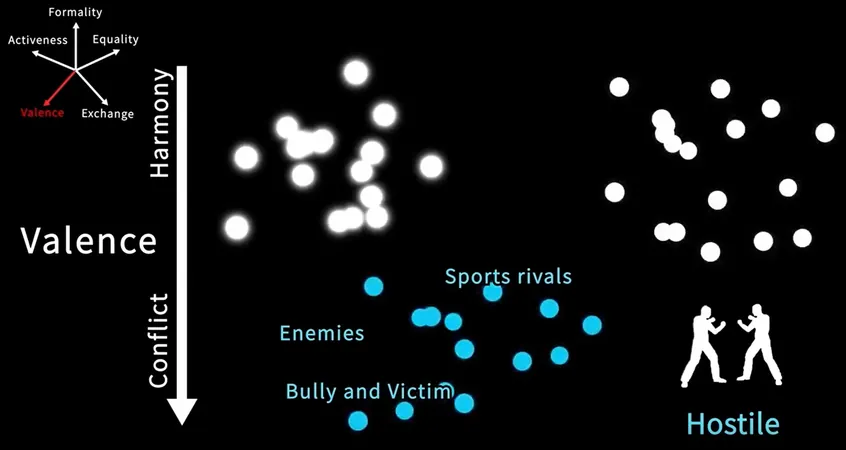
Uncovering the Universal Framework of Human Relationships: What It Means Across Cultures and Time
2025-03-30
Author: Daniel
Understanding Human Relationships
Humans engage in a diverse and complex range of social connections throughout their lives, extending from friendships and family ties to romantic involvements, professional networks, and online interactions. While the dynamic nature and health implications of these relationships have been explored extensively, how individuals perceive and conceptualize these bonds remains less understood.
Recent Research Findings
Recent research conducted by a team at Beijing Normal University dives into this intriguing aspect of human relationships. Published in the prestigious journal *Nature Human Behavior*, their study sheds light on how individuals from various cultural and historical contexts interpret and categorize their interpersonal connections.
The Study Approach
The researchers embarked on an ambitious project involving online surveys, laboratory experiments, and an analysis of historical literature. “We gathered survey data from 19 different regions across the globe, conducted in-depth interviews within the matrilineal Mosuo tribe in China, and examined historical documents dating back over 3,000 years,” explained Yin Wang, the lead author of the study.
Data Analysis and Findings
This extensive data collection enabled the team to analyze the relationships of over 20,427 individuals worldwide, using advanced computational models to uncover the underlying structures of human connections. Their innovative approach revealed a fresh framework, termed the FAVEE-HPP model, which stands for Formality, Activeness, Valence, Exchange, Equality, and is further categorized into three relationship types: hostile, private, and public.
Implications of the FAVEE-HPP Model
"The FAVEE-HPP model illustrates that people across different cultures engage with relationships through these five dimensions and three categories," noted Wang. "This framework is not only operational across various cultural landscapes but also consistent through different historical timeframes."
Future Research Directions
One of the remarkable implications of this study is its capacity to offer a computational methodology for quantifying and organizing human relationships. Moving forward, researchers envision utilizing this framework to investigate connections among relationship dimensions and real-world issues like divorce rates, perceived social support levels, overall well-being, and even life expectancy.
Open Data for Further Investigation
Wang and his team are keen to continue their research, focusing on how individuals develop their understanding of relationships over time and how personal and contextual factors influence these perceptions. They have also made their data available on GitHub, opening the door for further investigation by other researchers into this intricate topic.
Conclusion and Future Possibilities
In a world where understanding social dynamics is becoming increasingly vital, this newly proposed universal model not only enhances comprehension of human relationships but also holds the potential to illuminate patterns in social networks and their evolution across different cultures and generations.
As we look ahead, the possibilities for applying this research are vast. Whether in studies of family dynamics, professional interactions, or even the impact of technology on relationships, the insights gained could significantly deepen our understanding of what it means to connect in today's complex world. Stay tuned as this area of study continues to unfold!





 Brasil (PT)
Brasil (PT)
 Canada (EN)
Canada (EN)
 Chile (ES)
Chile (ES)
 Česko (CS)
Česko (CS)
 대한민국 (KO)
대한민국 (KO)
 España (ES)
España (ES)
 France (FR)
France (FR)
 Hong Kong (EN)
Hong Kong (EN)
 Italia (IT)
Italia (IT)
 日本 (JA)
日本 (JA)
 Magyarország (HU)
Magyarország (HU)
 Norge (NO)
Norge (NO)
 Polska (PL)
Polska (PL)
 Schweiz (DE)
Schweiz (DE)
 Singapore (EN)
Singapore (EN)
 Sverige (SV)
Sverige (SV)
 Suomi (FI)
Suomi (FI)
 Türkiye (TR)
Türkiye (TR)
 الإمارات العربية المتحدة (AR)
الإمارات العربية المتحدة (AR)